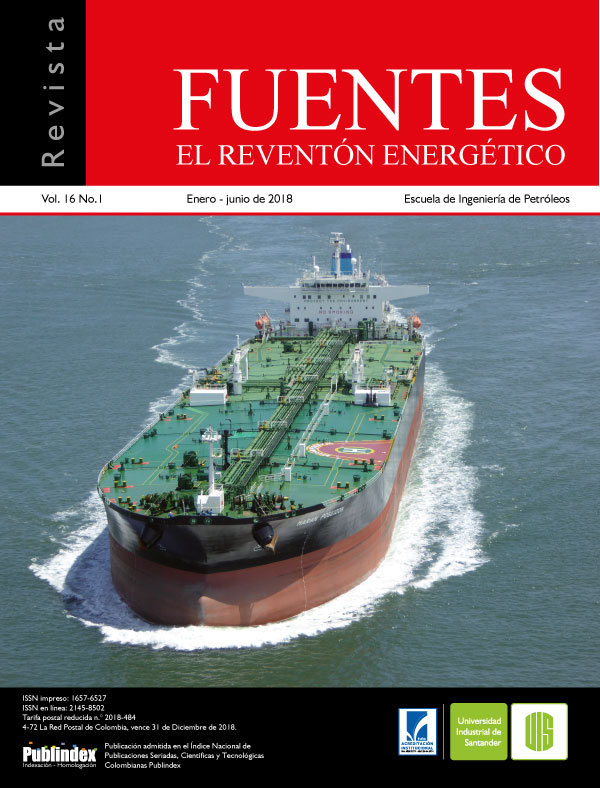Effects of salts and temperature on rheological and viscoelastic behavior of low molecular weight HPAM solutions
Published 2018-07-24
Keywords
- Polymeric Solutions,
- Rheological Behavior,
- Viscoelastic Behavior,
- Enhanced Oil Recovery
How to Cite
Abstract
The hydrolyzed polyacrylamide (HPAM) is the most often used polymer in Enhanced Oil Recovery (EOR) activities. The molecular weight of HPAM has a direct relationship with the molecular size and the permeability of the porous media through the polymer will be injected. The polymer flooding has been documented in EOR process for different types of geologic formations, salinity and temperature conditions. This work aims to investigate the effects of salts and temperature on the rheological and viscoelastic behavior of polymer solutions for low permeability formations. The knowledge of the rheological behavior is imperative to evaluate the mobility ratio improvement, while elastic properties are associated with an additional oil mobilization. For this reason, an experimental study was conducted using Flopaam 3230S over two temperatures and three different brine compositions. The flow curves show a significant reduction polymer viscosity when the concentration of ionic species increases, reducing the hydrodynamic size of the polymer. The Ostwald-de Waele law and Carreau-Yasuda model were used to describe the rheological properties of the solutions. The variation of viscosity with temperature was also studied and adjusted to Arrhenius equation. Regarding the viscoelastic properties, comparisons were made between the different polymeric solutions, and we observed the reduction of the linear viscoelastic region (LVR) according to the increase of temperature, divalent ions concentration, and more diluted solutions. The viscous modulus is predominant for all solutions. These results contribute to the design of low molecular weight polymeric solutions under conditions of salinity with a high concentration of divalent ions, which is useful for low permeability formations.
